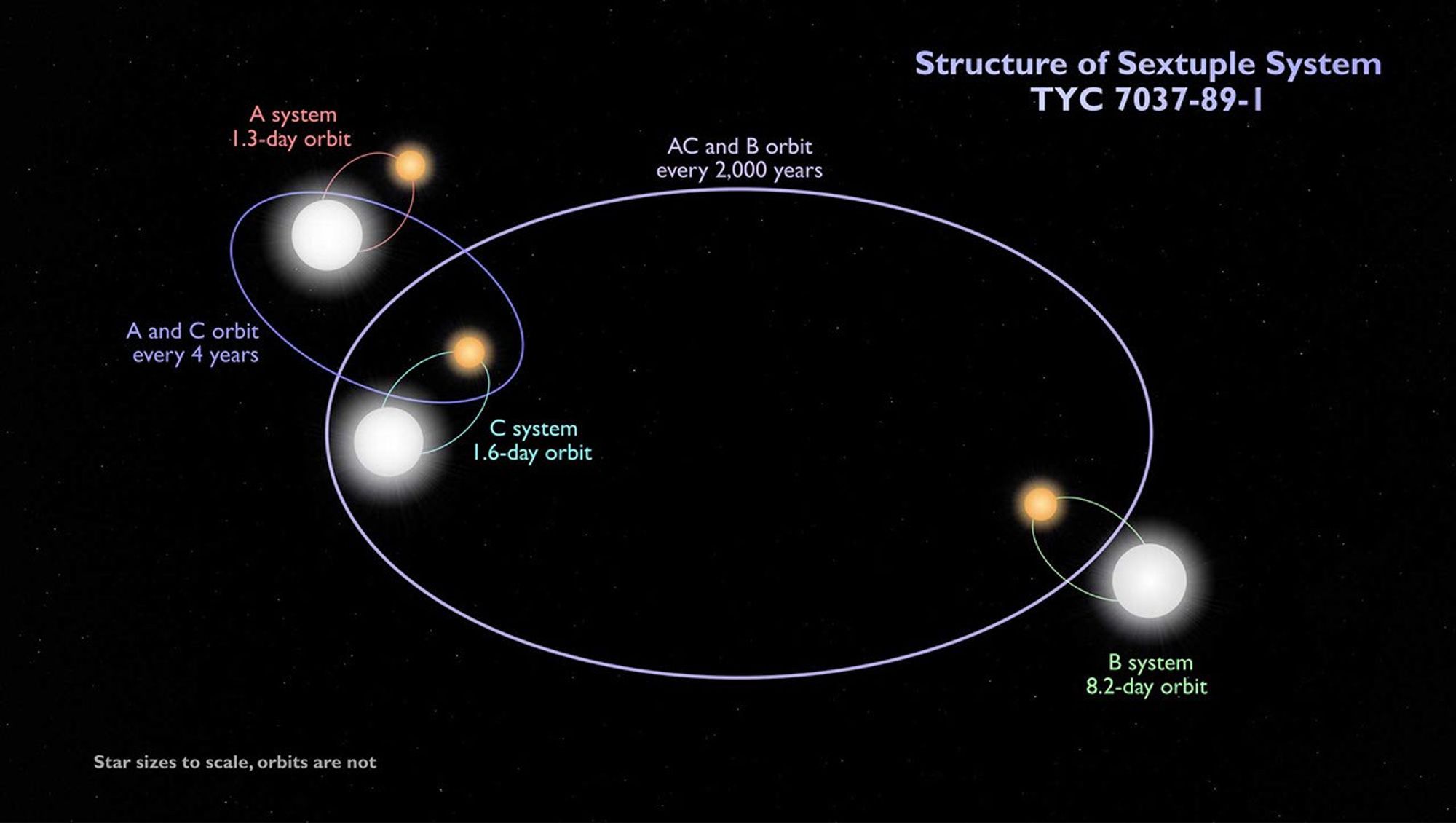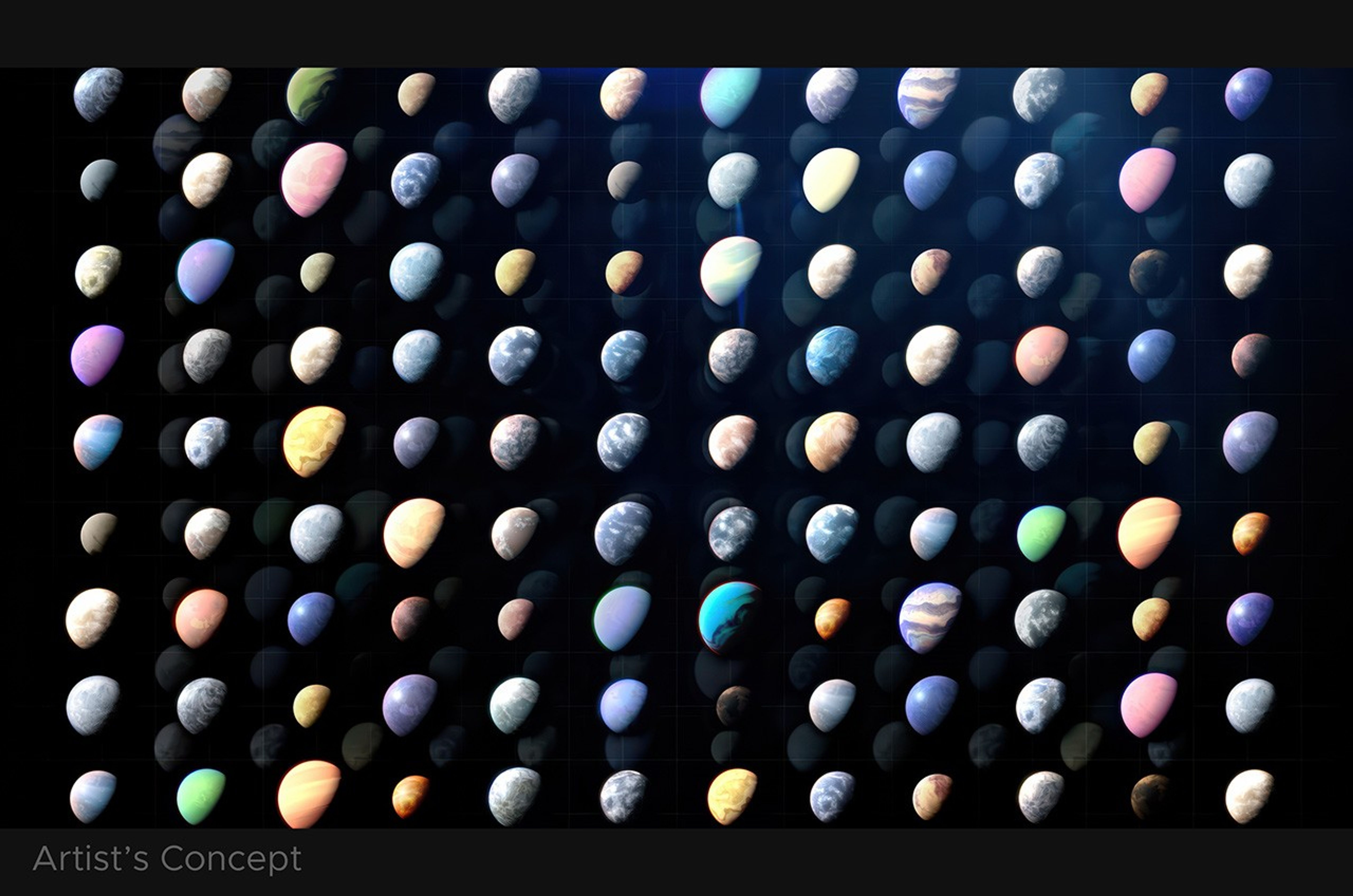Multiple Star Systems
Our solar system, with its eight planets orbiting a solitary Sun, feels familiar because it's where we live. But in the galaxy at large, planetary systems like ours are decidedly in the minority. More than half of all stars in the sky have one or more partners. These multiple star systems come in a stunning variety of flavors: large, hot stars orbited by smaller, cooler ones; double stars orbited by planets; pairs pulsing with X-rays as one sheds material that is devoured by the other; systems with as many as seven stars in a complex gravitational dance. Let’s take a short tour.
NASA's Goddard Space Flight Center/Chris Smith (USRA)
Binary Stars
The variety seen in double-star systems is nearly as rich as the galaxy’s stellar population as a whole. These pairs can differ significantly in mass, with, say, a mid-sized yellow star like our Sun locked in an orbital embrace with a far smaller, cooler red dwarf. Some binary partners evolve rapidly into red giant or supergiant stars, while their small companions remain stable. Binary systems also can host orbiting planets that have two stars in their skies, as on the fictional Tatooine in the Star Wars movies. And from our viewpoint on Earth, some binary stars stage their own eclipses. Eclipses are scientifically valuable because observing changes in light as one star passes in front of the other can reveal their masses, diameters, precise orbits, and even compositions. Pairs of neutron stars can spiral together and collide, producing some of the universe’s heavy elements, like gold, platinum, and iodine.
NASA’s Goddard Space Flight Center/Chris Smith (USRA/GESTAR)
X-ray Binaries
Bizarre pairs known as X-ray binaries can exchange material between stars. A larger, more quickly evolving star can run out of nuclear fuel, explode in a supernova, and leave behind a far denser white dwarf, neutron star, or black hole. The collapsed star’s more powerful gravity can begin to drain away material from the companion star if it orbits closely enough. That process produces X-rays as the material falling onto the collapsed star is heated to more than 1.8 million degrees Fahrenheit (1 million degrees Celsius). X-ray binaries, including those that eclipse, can provide valuable data that help scientists understand extreme physical phenomena including the lighthouse-like pulses emitted by spinning neutron stars, thermonuclear blasts ignited in the fallen gas, and dips in starlight that reveal the presence of intervening material forming an accretion disk around the orbiting stars.
Other Multiples
Some multiple star systems include three stars or more, their orbits intricately intertwined by gravity. As many as seven stars have been observed in a single system.
Like binaries, triple-star systems can host planets. For example, our nearest stellar neighbor, the Alpha Centauri system, includes three stars. The outermost, Proxima Centauri, is known to host at least one planet. Another three-star system, HD 131399, includes a giant gas planet four times the mass of Jupiter in orbit around its central star, while two more stars appear to orbit both at a much greater distance.

A recently discovered and spectacular six-star system, TYC 7037-89-1, possesses a gravitational complexity worthy of Rube Goldberg. Three separate pairs of stars orbit each other in typical binary fashion. But two of these pairs also orbit one another. The third pair, at a greater distance, orbits the other two pairs – the stars in each binary eclipse each other in turn from our point of view.



































